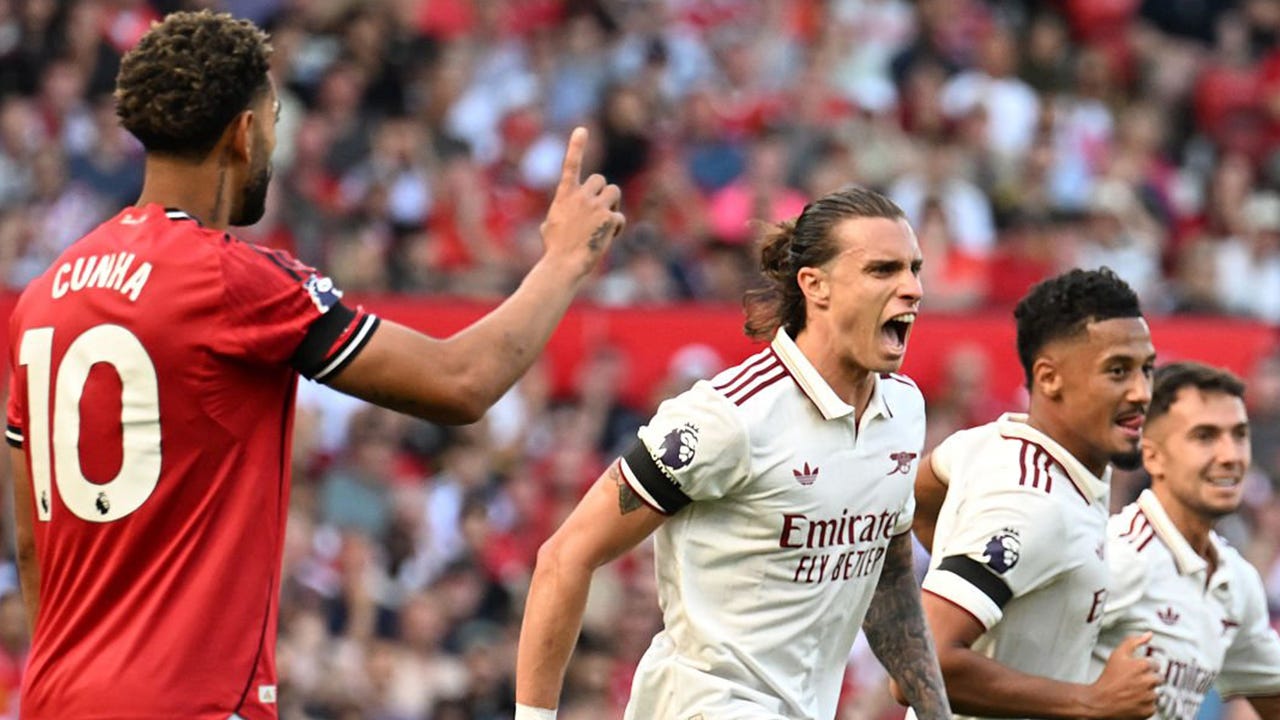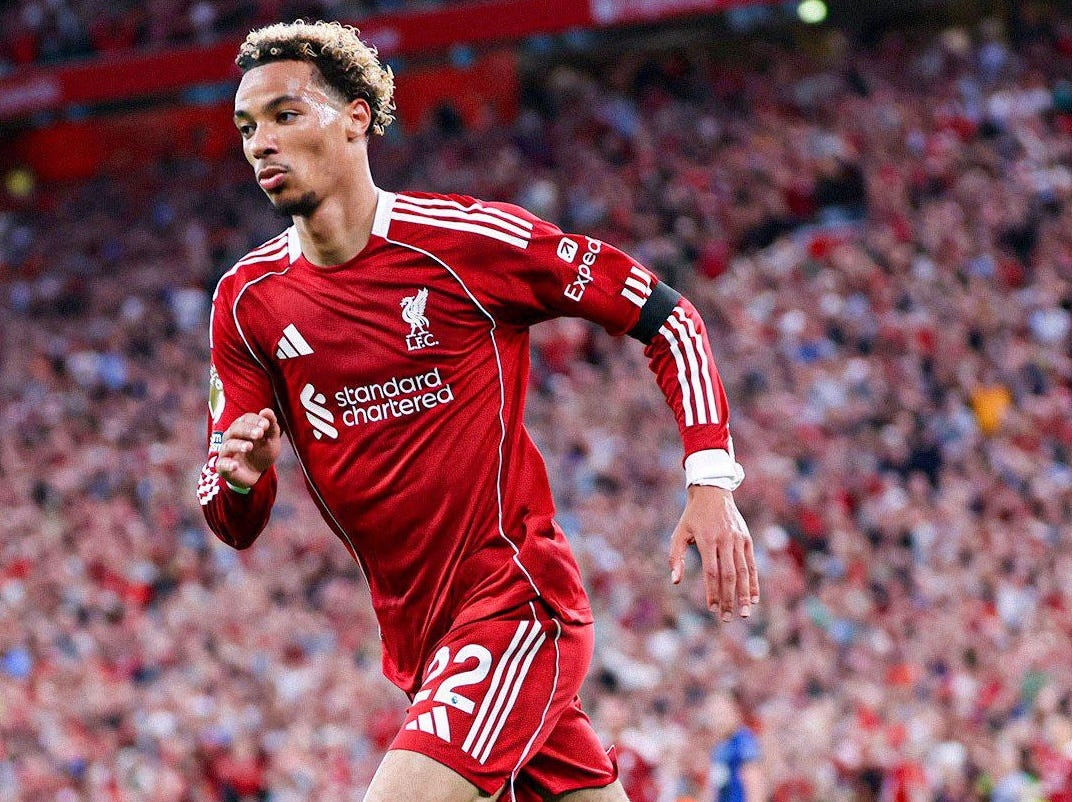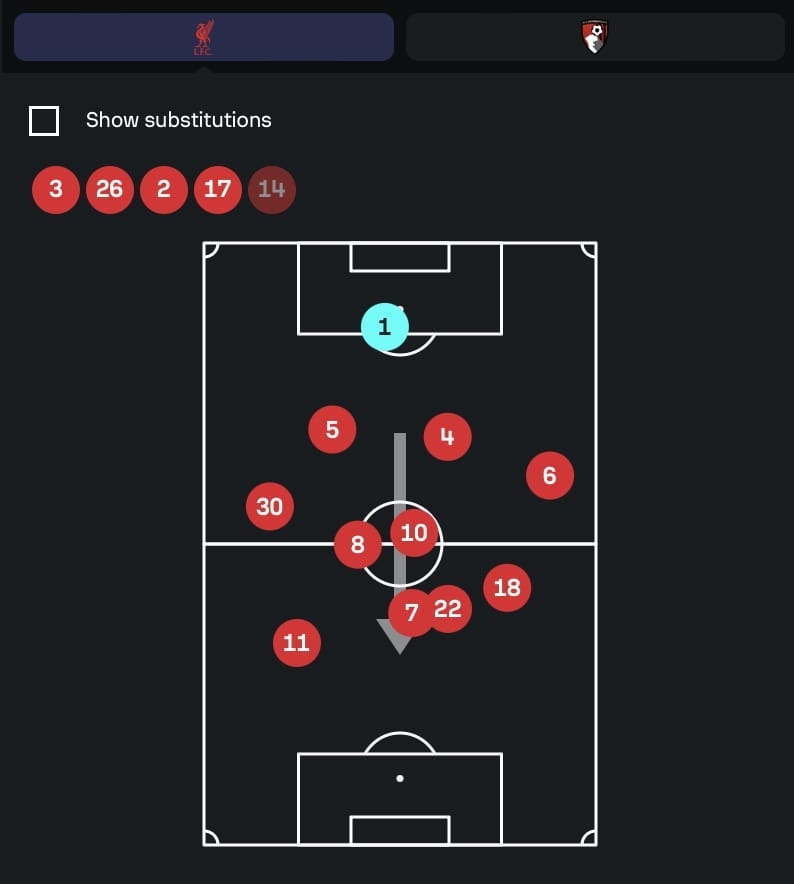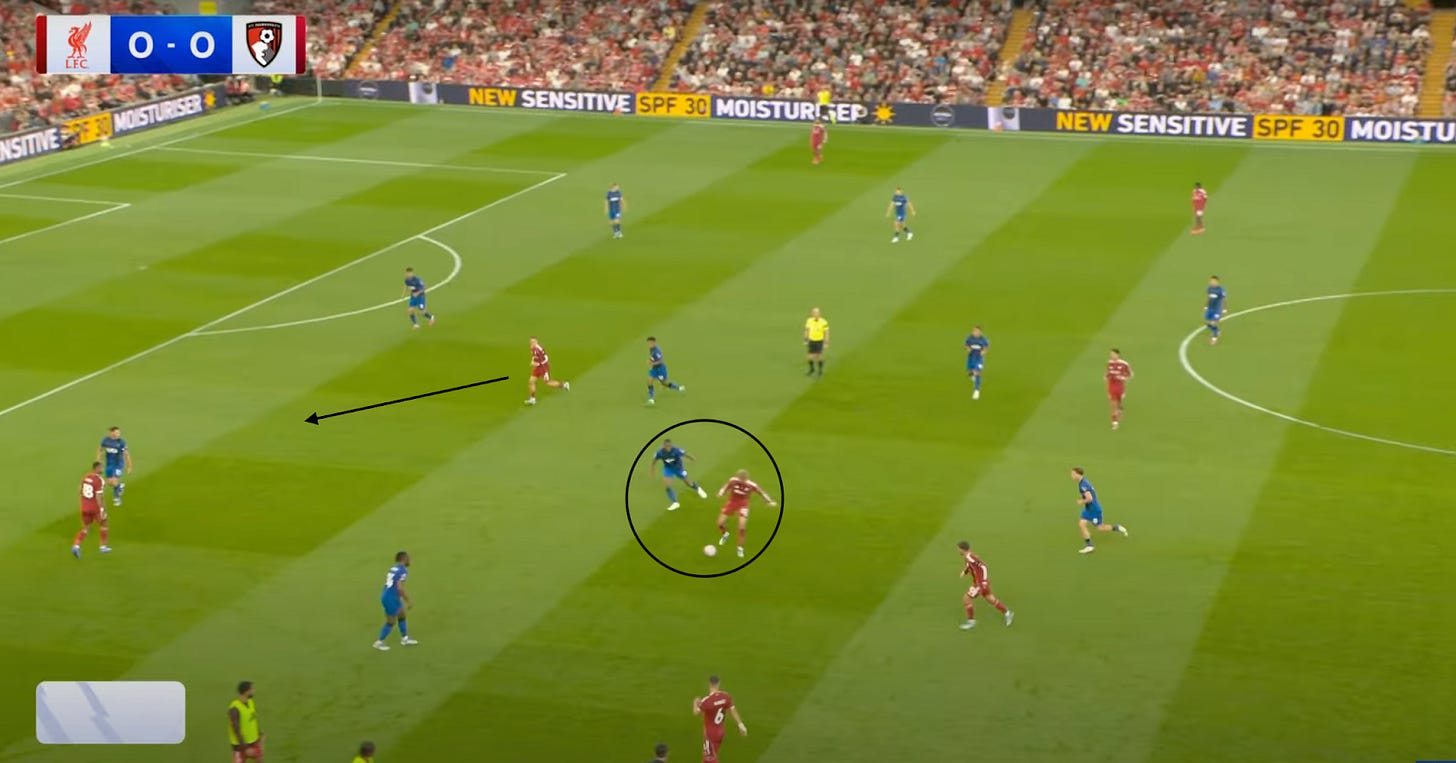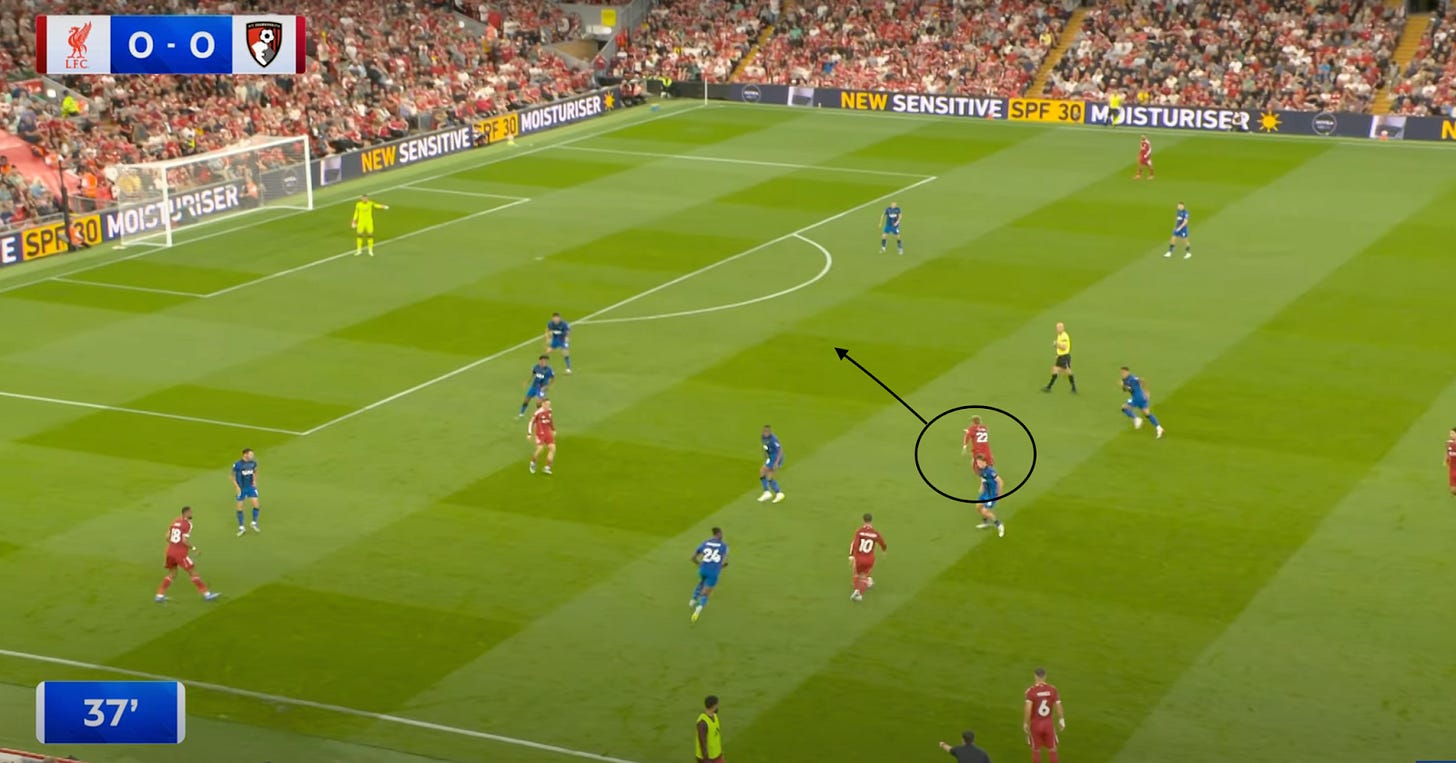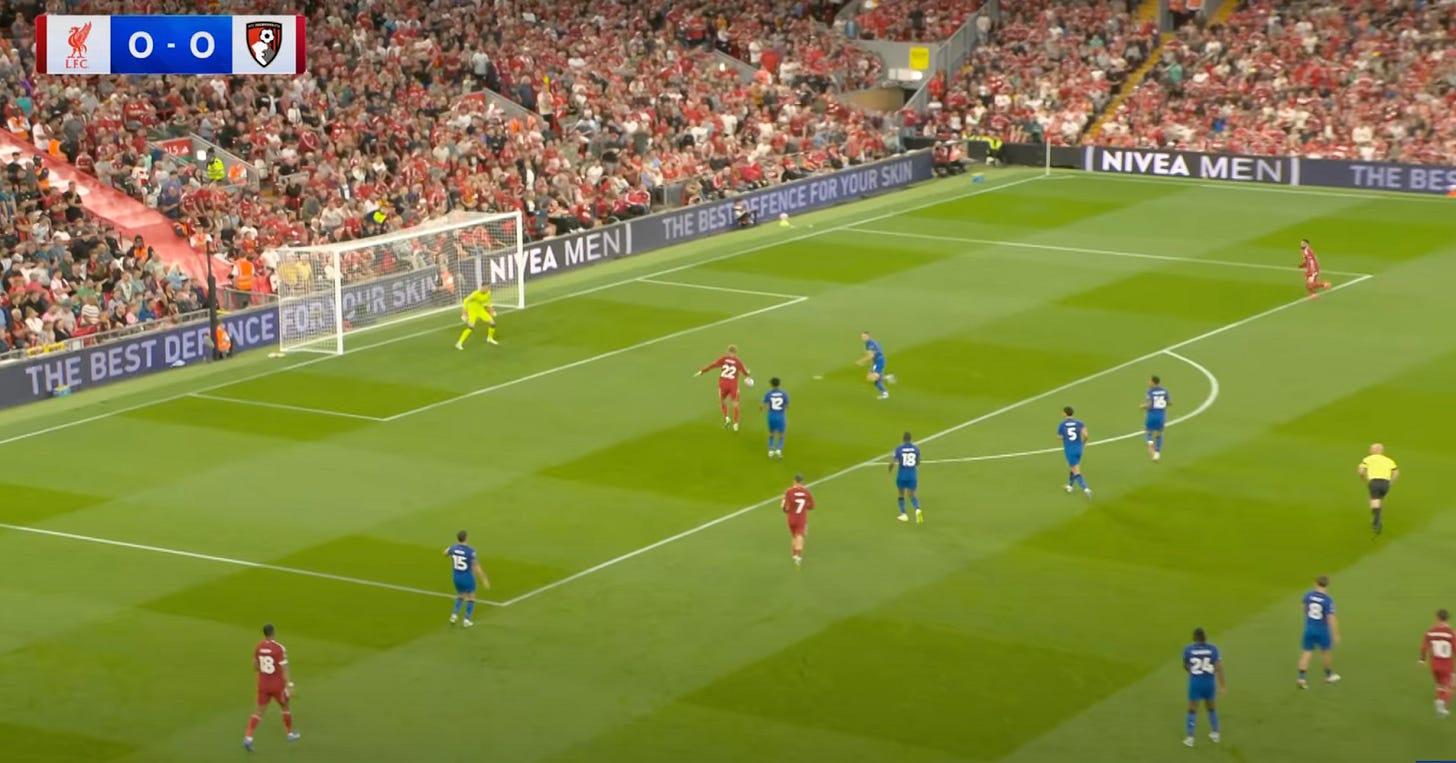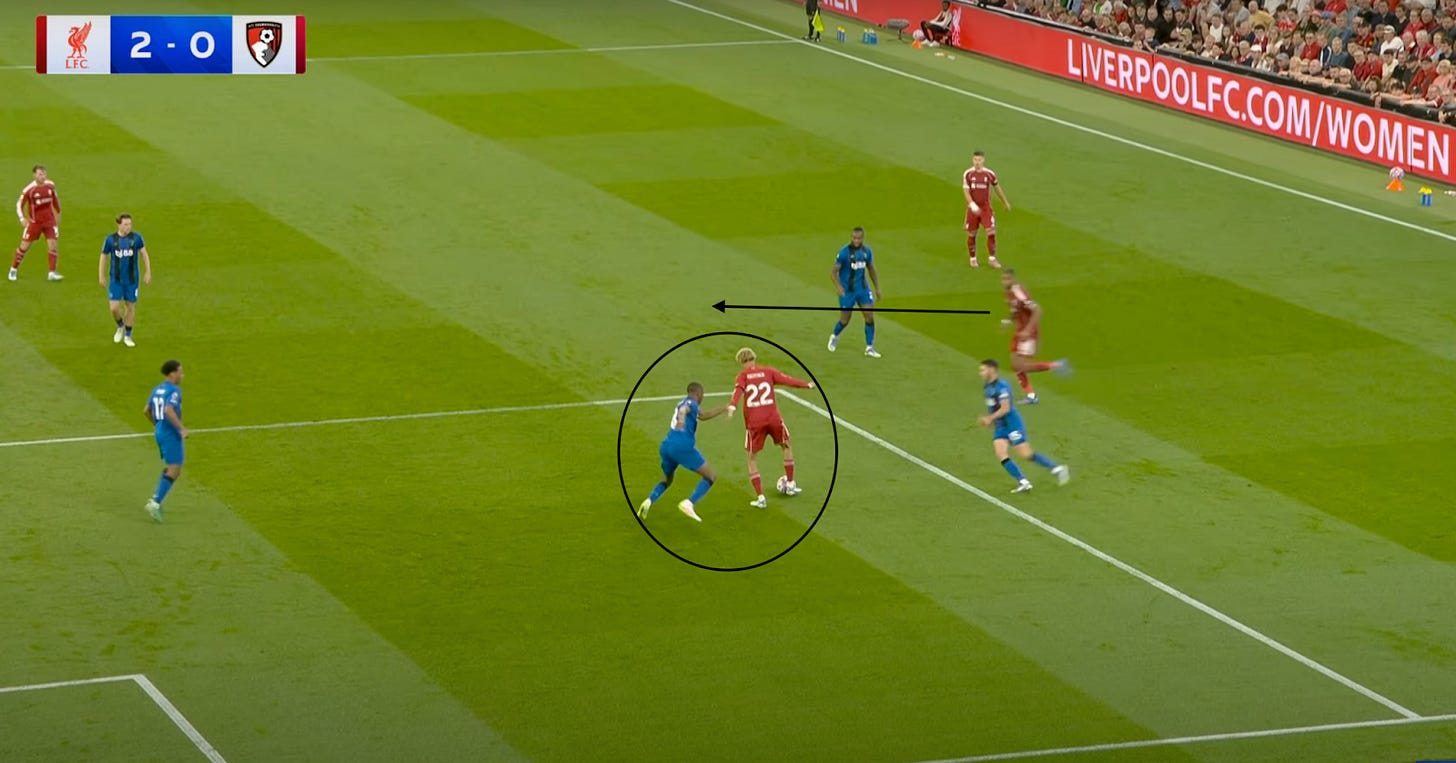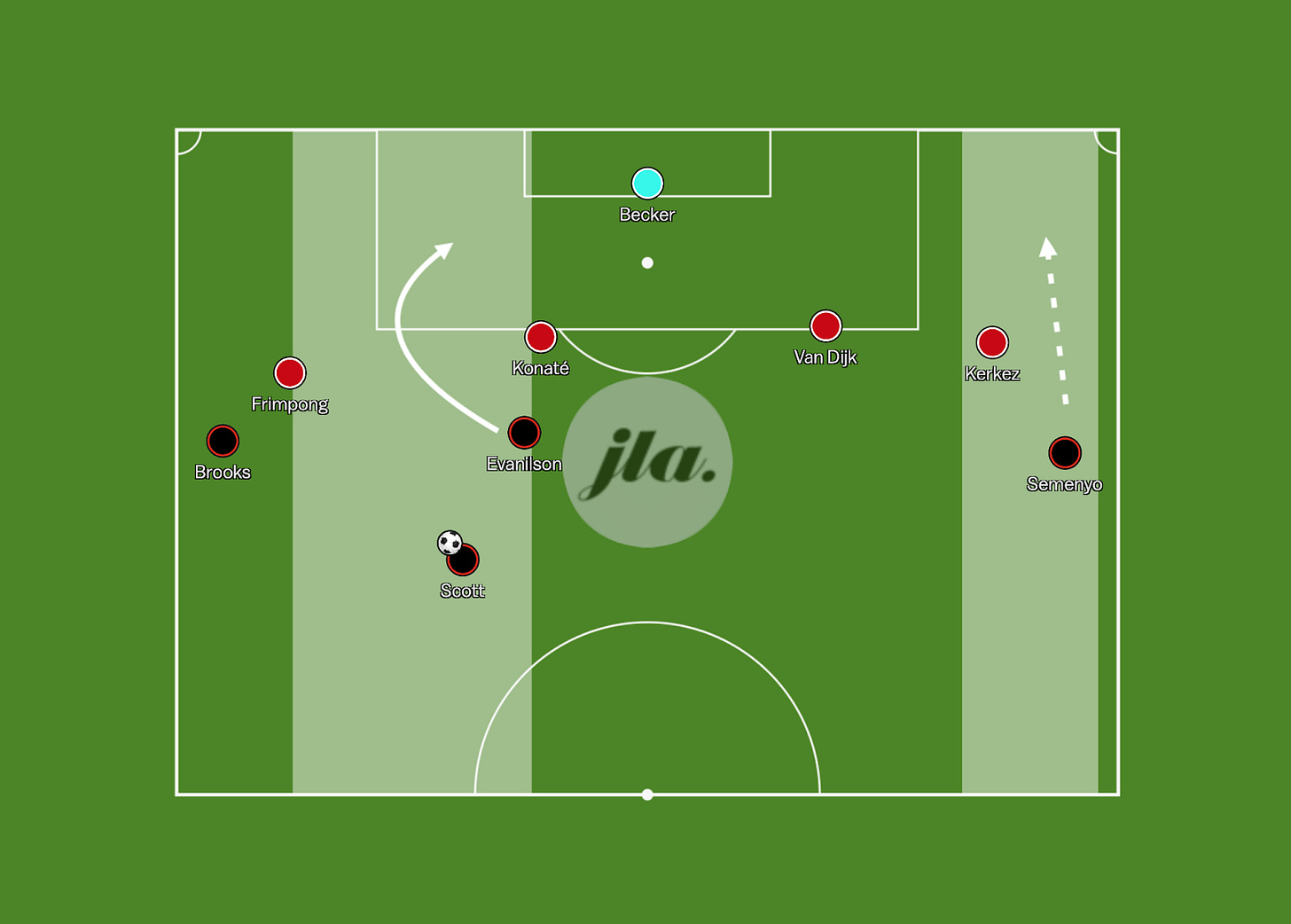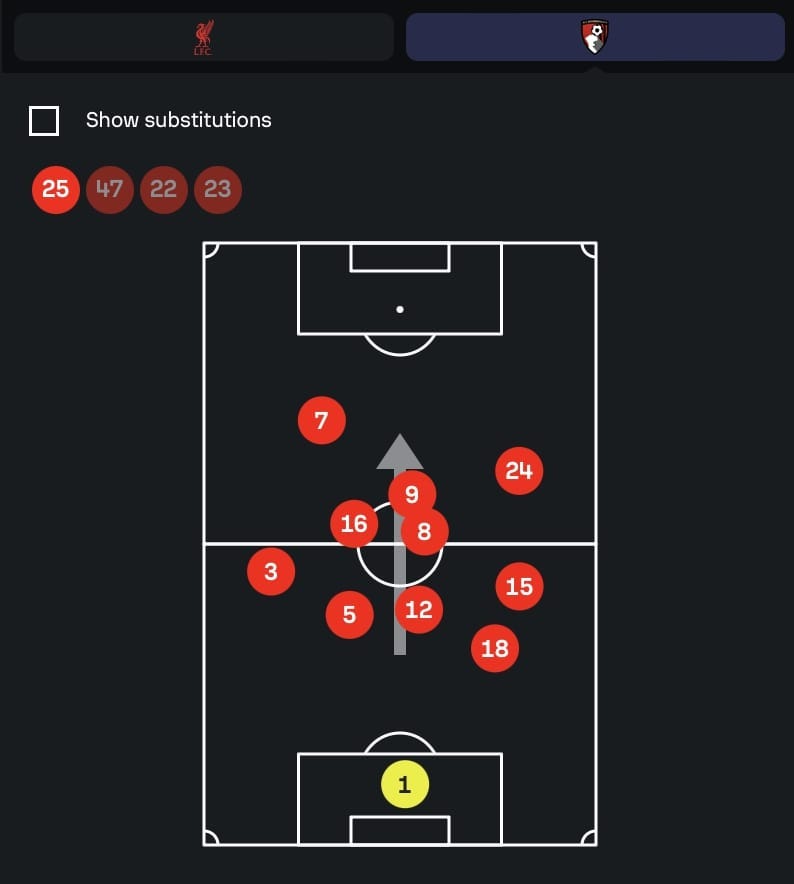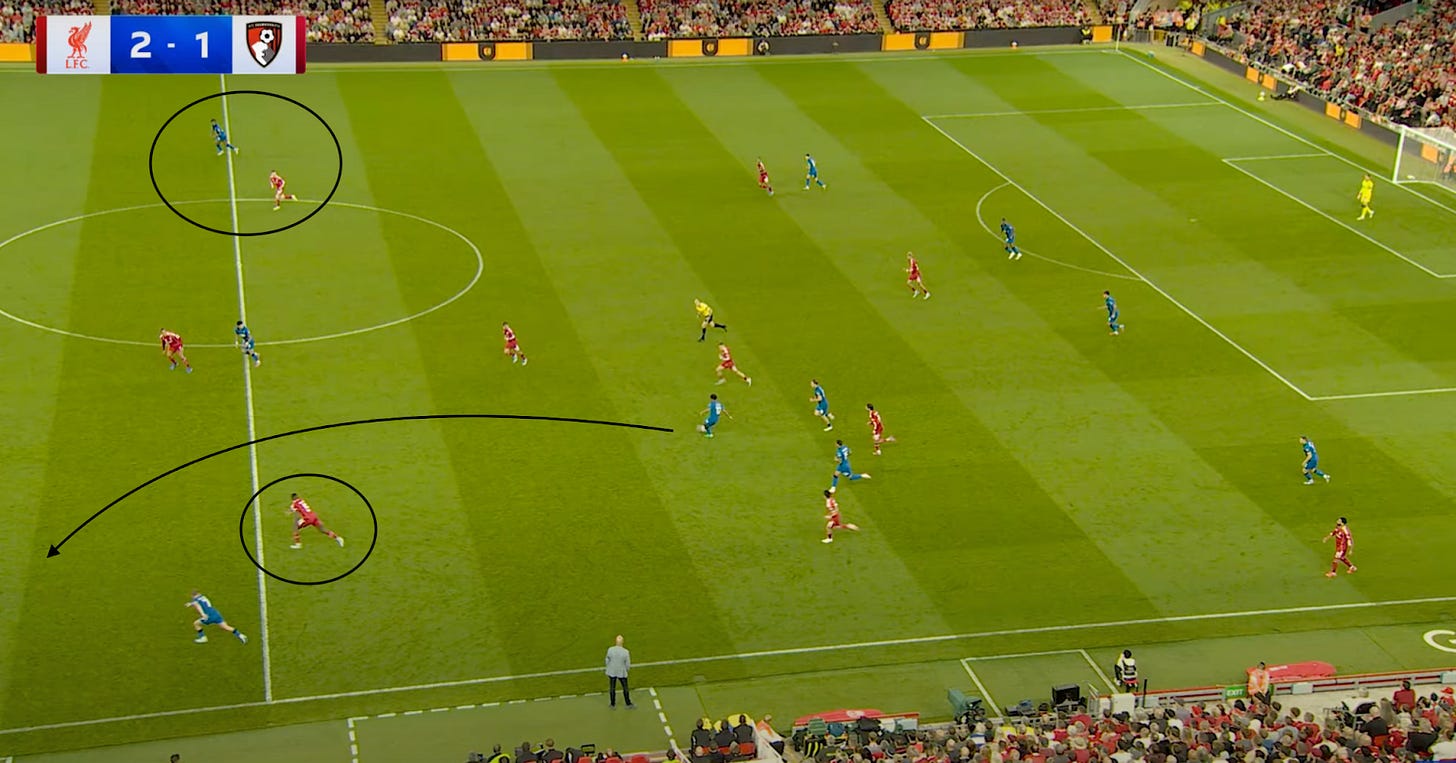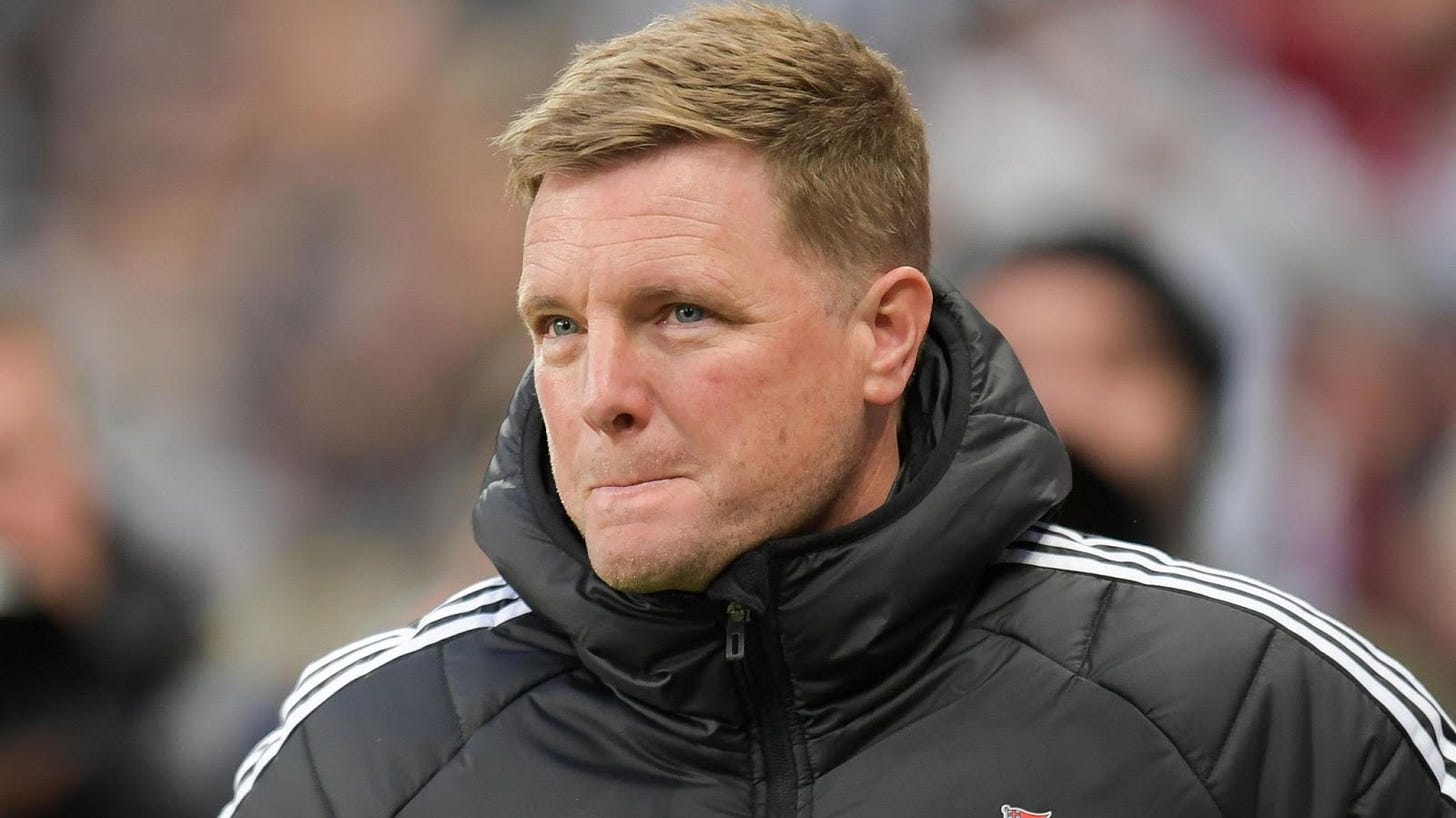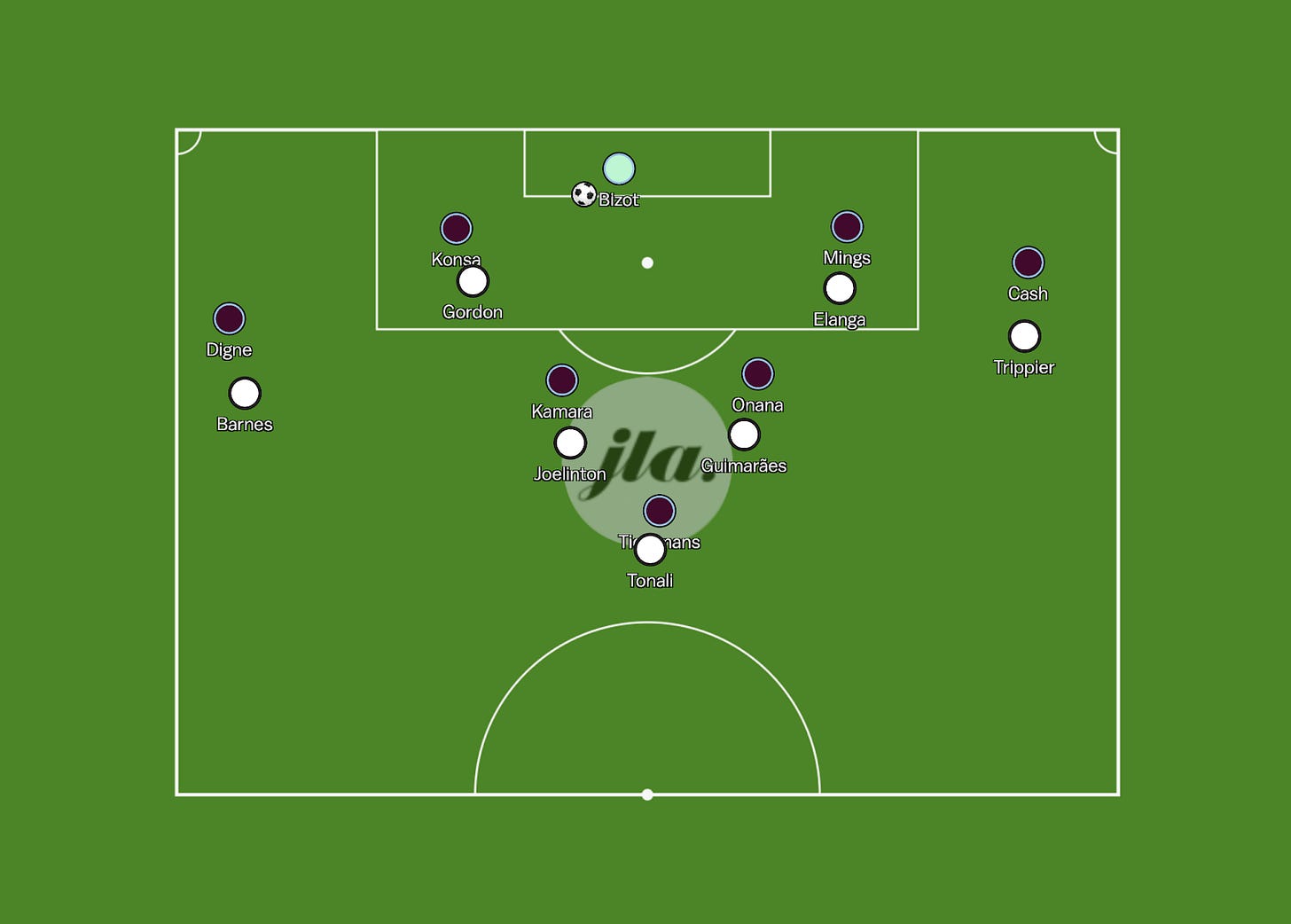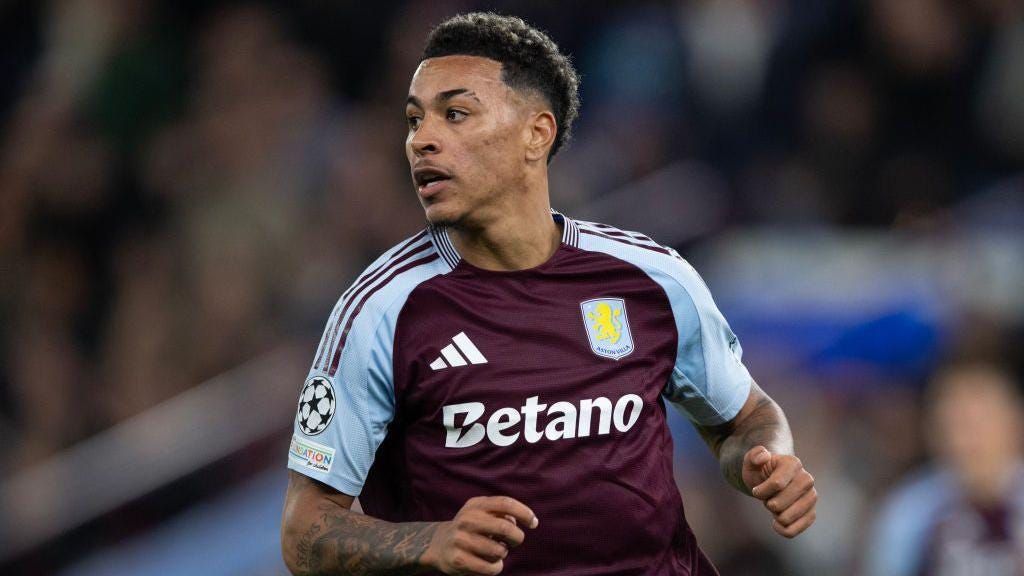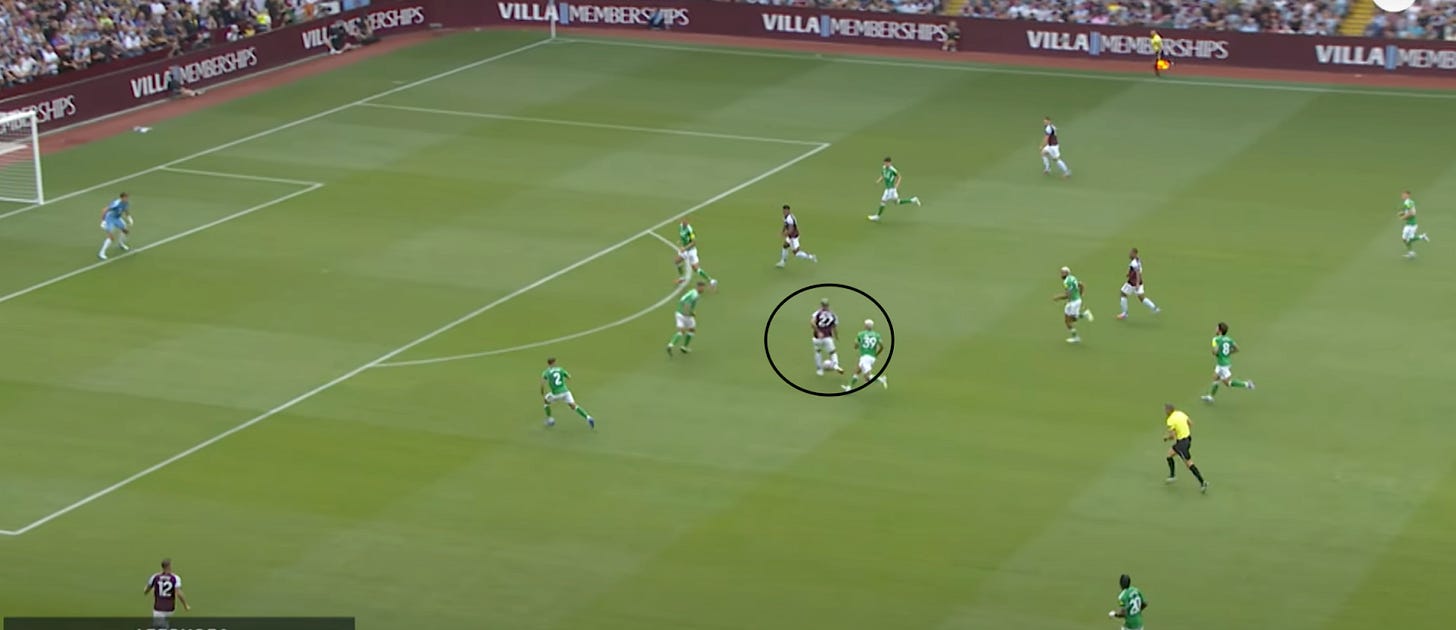Liverpool's chaotic win, How Palace nullified Chelsea and The Truth about Man Utd v Arsenal.
The Fallout Is Back.
GW1 is done and here’s what we’re analysing on The Fallout.
• Liverpool vs Bournemouth: Arne’s All-Out Attack
• Newcastle vs Aston Villa: Eddie Howe’s Side Holted
• Chelsea vs Crystal Palace: All Doom And Gloom?
• Man United vs Arsenal: Conflicting Feelings
Liverpool vs Bournemouth
Before getting into the analysis of the games, please allow me to try and put into words something that cannot be put into words…
15 minutes before the 8 o’clock game that kicks off the 2025/26 Premier League, the mood within Anfield is mixed. Liverpool fans are filled with complicated and convoluted emotions: optimistic, the club has moved unprecedentedly – to not only replenish departing players, but to also fortify positions of strength, all in the hope of retaining the ultimate honour, the Premier League title; at the same time, there is an air of melancholy: this marks a moment to remember the untimely departure of Diogo Jota and Andre Silva.
Words fail to do justice to this tragic event.
And when the Anfield congregation bursts into hymn for You’ll Never Walk Alone, the emotion is palpable: the voice cracks from devoted fans symbolic of the fickle flickering between hope and heartbreak. Perhaps, if there are any words that can do justice to Jota’s and Silva’s departure, the title of that famous song gets close.
For Liverpool, this mood frames the game. Optimism and sadness. But don’t get it wrong, this sadness is not placidity. It would be more accurately described as anger – nay fury: fury at the arbitrary and unfair nature of life.
After the minute of silence is observed for both men, the crowd shouts in outraged defiance.
And so, today, the red side of Liverpool, fans and players alike, desperately want to win. Not merely because they are expected to after their impressive transfer window – but infinitely more importantly, to win in memory of Jota and Silva.
Their opponents tonight are Bournemouth. Over the summer, Bournemouth have had their assets stripped, in such a manner that even Jim Radcliffe [sic] would shudder. As has been the case with Bournemouth's success in the Premier League, they recruit smartly. The loss of their core backline this transfer window (with Illia Zabarnyi, Dean Huijsen, Milos Kerkez, and Kepa Arrizabalaga all leaving this summer) has been astutely replaced with Adrien Truffert, Djordje Petrovic, and Bafodé Diakité. However, their defense still looks light – especially against this heavily attacking Liverpool team.
Yet, despite this defensive fragility, Andoni Iraola’s Bournemouth don’t play a conservative, defensive gamestyle – sure, they play with tact and guile, but they also attack whenever they see weakness; and a ropey Liverpool defence means that they would have plenty of opportunities to exploit this weakness.
This is how the game was played, with breathless attacking gusto from both sides.
Arne’s All-Out Attack
Hugo Ekitike’s strengths lie in his ability to manipulate space: dragging defenders out of position and presenting his teammates with a chance to exploit this gap.
Against Bournemouth, Ekitike did this constantly.
Ekitike drops deep to collect the ball, dragging Diakité out of position – one touch, pass, and turn – pivoting round his marker, offering support to his teammate now rushing into the gap left by Ekitike’s marker. As was the case in this game (and one would guess most games hereafter), Wirtz was Ekitike’s main partner in crime. At times, they played together as two ‘10’s, bouncing passes between each other; as we can see from their average positions (Wirtz – 7, Ekitike – 22), they primarily played adjacent to each other:
Liverpool’s Average Positions vs. Bournemouth
This was very successful. Liverpool’s two goals, while Ekitike was on the pitch, came from this strategy.
Take a look at the first goal.
Ekitike drops very deep and Diakité follows (circled below); Wirtz moves across into the space opened by Diakité's absence (arrowed below); Senesi then has to cover this gap by picking up Wirtz.
Next, Ekitike passes back to Mac Allister, turns and runs into the space created when Senesi shifted to cover Diakité.
Diakité is left in no-man's land, unsure whether to press Mac Allister or track back; Mac Allister plays the ball through to Ekitike who gets a little fortunate with the ricochet, but ends up through on goal and is cool enough to pass the ball into the net.
The fortuitousness of this goal shouldn’t detract from the brilliant link-up play that is able to create the vulnerabilities necessary to allow this to become a real chance.
The same patterns of play are utilised for the second goal, but this time Ekitike drops into wider areas, linking up with Gakpo.
Ekitike drags Diakité wide (circled below), into an area he doesn’t want to be in; Adams, the holding midfielder, drops into the space left by Diakité; Ekitike, then, lays off Gakpo (arrowed below), who runs into the space left by the centreback and finds the bottom corner.
These two goals can be explained away, with discussion of the luckiness of the first goal and the terrible defending of the second goal. This might be the case – but Liverpool only get lucky and cause terrible defending because their patterns of play manage to manipulate the positions of the Bournemouth players.
In terms of the two succeeding Liverpool goals, to talk of tactics is a disservice. We must instead defer to the mood that frames the game: Liverpool’s visceral desperation to win. And they did.
What we learn from this game is that, when the interplay between Ekitike and his teammates, most notably Wirtz, worked – it really did work. If Liverpool are to push for the title, mastering this is key.
Iraola’s Tactical Fluidity
The threat that Bournemouth pose under Iraola, at this point, should not come as a surprise. Iraola’s ability to adapt his game, reacting to the tactics of the opposition, is excellent. Against Liverpool, Iraola’s tactical shrewdness was on full display; and even though they didn’t get the win – they got very close.
Throughout the game, Iraola identified two main weaknesses within the Liverpool defense and targeted those areas relentlessly: the gap between right centreback and the rightback, and the leftback.
Highlighted Areas of the Pitch that Iraola Targeted
Semenyo’s job was to target the leftback. In the first half, they primarily did this by launching the ball up to Semenyo – who is stronger and taller than Kerkez, and technically gifted enough to make the ball stick; he then either controls it and turns to run at the leftback or heads it down to an onrushing midfielder.
Evanilson’s job, on the other hand, was to target the space between the right centreback and the rightback. Against Konate, in the first half, Evanilson routinely dragged him out of position, getting the wrong side of him, and heading the ball down to his teammates. Evanilson’s strength, skill to ride the tackle and play in a teammate was critical. Konate looked all over the place largely because of the nuisance that Evanilson caused him.
We can evidently see the areas that Semenyo (24) and Evanilson (7) targeted in their average positions:
Bournemouth’s Average Positions vs. Liverpool
This tactic granted Bournemouth quite a few good opportunities, causing the Liverpool defense difficulties. However, Iraola was forced to change his gameplan after Slot made his first set of personnel changes: taking off his two starting fullbacks, Kerkez and Frimpong, replacing them with Robertson and Endo.
In one sense this change makes sense: Slot is addressing the problems that Kerkez was having against Semenyo; the aerial balls to Semenyo are no longer viable because, with Robertson now on the pitch, Bournemouth could not confidently rely on Semenyo winning the aerial battle. Furthermore, Endo and Jones provide a little more defensive security in midfield to challenge the aerial balls that Evanilison and Semenyo are knocking down to their teammates.
Yet, with the substitutions, Slot has weakened the areas on the pitch that Bournemouth were targeting. Liverpool, on the right-hand side, could no longer bank on Frimpong’s pace to bail out an out of position Konate. On the left-hand side, Robertson, still an excellent player, has been caught out of position plenty of times over the last season or so.
And so, with long balls up to Semenyo and Evanilson no longer viable – Iraola instructed his players to keep the ball on the ground, playing more through-balls that target the half spaces and wide areas.
We saw this with the first Bournemouth goal.
Plainly, we can see that Robertson (circled above, top of frame) is caught on the wrong side of Semenyo and Konate (circled above, bottom of frame) is well out of position. Brookes is free to run past Konate and receive an excellent through-ball, before he plays a wonderful back-post cross for Semenyo’s goal.
This defensive fragility that Iraola targeted must be solved by Liverpool, or else they’ll be more heavily punished.
Even without the win, Iraola’s tactical acumen combined with Bournemouth’s talented squad will cause problems for many opponents.
Where will Liverpool finish this season?
Aston Villa vs. Newcastle United
With Aston Villa vs. Newcastle being the second game due for analysis, we go from the sublime to the ridiculous: from a six-goal opening day frenzy to a little bit of a drab showing from both teams in the 12:30 Saturday game – perhaps reflecting the apprehensive atmosphere surrounding both clubs after a not-too-great transfer window.
Despite the relatively stale game, however, both teams experienced their time in the ‘ascendency’ (as the commentators are wont to say) and have positives and negatives to take away from their performances.
Howe Holted in Front of the Holte
Newcastle completely controlled the first half, attempting 8 shots to Aston Villa’s 0. They did this through a pressing structure that prevented Villa from being able to play out from the back and retain possession.
Villa set up in a 4-2-3-1, with two deeper midfielders in Kamara and Onana.
Howe’s press was the following: Howe instructed Joelinton and Bruno to mark Kamara and Onana, Villa’s deeper midfielders; Gordon and Elanga then pressed the two centrebacks; Barnes and a very progressive Trippier would jump onto the fullbacks.
It looked like this:
As a consequence, Villa really struggled to maintain possession of the ball – with the Newcastle press resulting in several big chances they failed to convert. This led Newcastle to create 1.47 xG, compared to Villa’s pitiful 0.13. In light of this, Newcastle will be rightly frustrated and disappointed that they didn’t win this game, especially against a 10-man Villa.
Even though they didn’t win, such well-trained, proficient out-of-possession work, as has always been the case with Howe’s teams, means that Newcastle will be formidable this season – if and only if they improve their in-possession work and are able to push home their advantages and finish their chances.
Do The Villains Have Something to Worry About?
This game was a poor showing from Villa. As we’ve seen, Howe’s pressing structure completely nullified Villa’s ability to progress the ball.
To combat this, Emery made a tactical change at half-time.
Rogers in the first half retained quite a lot of width, functioning as a left inside forward. However, after a first half where Villa weren’t able to retain possession at all, Rogers was instructed to tuck further into the middle, to provide extra support in a midfield dominated by Newcastle. Digne, therefore, was charged with providing the width on the left flank, in contrast to his first-half role, where he was instructed to sit deeper.
Villa’s ascendency came after this positional change was made: in the time right after the half time break and prior to Konsa’s red card. Villa were now able to progress the ball through the midfield– and, since Rogers is the creative spark of the team, having him in a more influential position allowed Villa to create chances.
Their best chance came from this tactical change.
Rogers (circled above) picks up the ball in the centre of midfield; Digne (bottom left of frame) and McGinn (top right of frame) stick to the wings, stretching the pitch; Watkins makes a run off the shoulder of the last defender. Rogers has the vision and the precision to play through Watkins who unfortunately hits the ball straight at the keeper.
If Villa are seriously going to challenge the top four, they need to work on their build-up stage and ability to beat the press – as well as using Rogers in a position where he is able to dictate the state of the game
After a lukewarm display from both teams, in discussions about how well each team will perform this season, we will have to reserve judgment.




